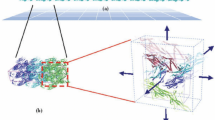Abstract
I discuss two extreme views about emergence and explanation in the face of the following facts. The continuum equations of fluid mechanics and material behavior (bending of beams) are remarkably successful. They continue to be used for engineering and building purposes despite the fact that they almost completely ignore lower scale structure and detail. In fact, they treat fluids and steel beams as continuous blobs with no lower scale (atomic/molecular) structure whatsoever. The explanatory question is how such equations can be so successful. Extreme reductionists views expect that a bottom-up explanation from the actual fundamental lower scale structure will answer this explanatory question. Extreme emergentist views deny such reductionist pictures and hold that no bottom-up explanation is possible. The paper argues for a more sophisticated analysis that recognizes the importance of structures at scales intermediate between the atomic and the continuum. It is an analysis that appeals to sophisticated mathematics called “homogenization theory.” One can, in fact, provide a nonreductive explanation of the relative autonomy of the continuum equations from the lower scale details.
I would like to thank Julia Bursten for helpful comments. This research was supported by a grant from the John Templeton Foundation.
Access this chapter
Tax calculation will be finalised at checkout
Purchases are for personal use only
Similar content being viewed by others
Notes
- 1.
Phillip Anderson’s famous paper, “More is Different,” represents the beginning of a backlash against such reductionist thinking at least by physicists (Anderson, 1972).
- 2.
u is the displacement vector, ρ is the material density, and f are the body forces acting on the material.
- 3.
Note that this characterization of the most important feature of emergent properties make no reference to parts or wholes. I think this demonstrates that mereological conceptions of emergence are most often mischaracterizations. However, this is would take us beyond the scope of the current paper.
- 4.
“Local” in the sense that the invariance holds for scales of several orders of magnitude but fails to hold if we zoom in even further, using x-ray diffraction techniques, for example.
- 5.
See below for more details about the theory of homogenization.
- 6.
The idea for this picture is due to the mathematician, Andrej Cherkaev. See his website for details. http://www.math.utah.edu/~cherk/.
- 7.
And, clearly, in a two phase system such as that in the figure, the complement of this function will delimit the volume fraction of the other phase.
- 8.
These will be generalized distribution functions.
- 9.
See Torquato (2002) for a detailed development of this approach.
References
Anderson, P. W. (1972). More is different. Science, 177 (4047), 393–396.
Fodor, J. (1974). Special sciences, or the disunity of sciences as a working hypothesis. Synthese, 28, 97–115.
Fodor, J. (1997). Special sciences: Still autonomous after all these years. Philosophical Perspectives, 11, 149–163.
Laughlin, R. B., & Pines, D. (2007). The theory of everything. In M. Bedau & P. Humphreys (Eds.), Emergence: Contemporary readings in philosophy and science (pp. 259–268). Boston: The MIT Press.
Torquato, S. (2002). Random heterogeneous materials: Microstructure and macroscopic properties. New York: Springer.
Truesdell, C. (1984). An idiot’s fugitive essays on science: Methods, criticism, training, circumstances. New York: Springer.
Author information
Authors and Affiliations
Corresponding author
Editor information
Editors and Affiliations
Rights and permissions
Copyright information
© 2020 Springer Nature Switzerland AG
About this chapter
Cite this chapter
Batterman, R.W. (2020). Multiscale Modeling: Explanation and Emergence. In: Gonzalez, W.J. (eds) Methodological Prospects for Scientific Research. Synthese Library, vol 430. Springer, Cham. https://doi.org/10.1007/978-3-030-52500-2_3
Download citation
DOI: https://doi.org/10.1007/978-3-030-52500-2_3
Published:
Publisher Name: Springer, Cham
Print ISBN: 978-3-030-52499-9
Online ISBN: 978-3-030-52500-2
eBook Packages: Religion and PhilosophyPhilosophy and Religion (R0)




